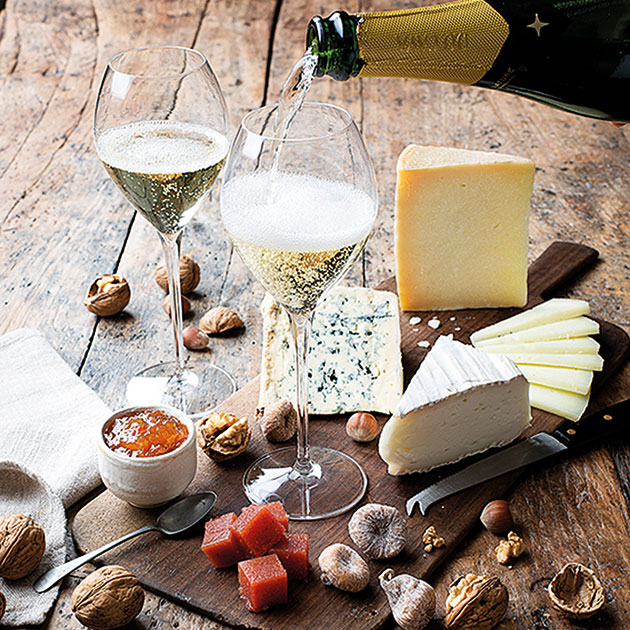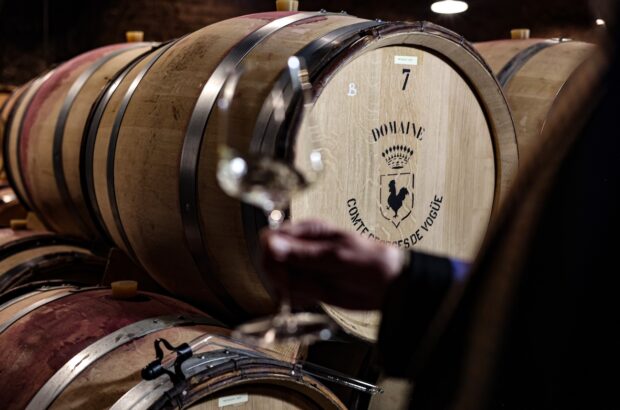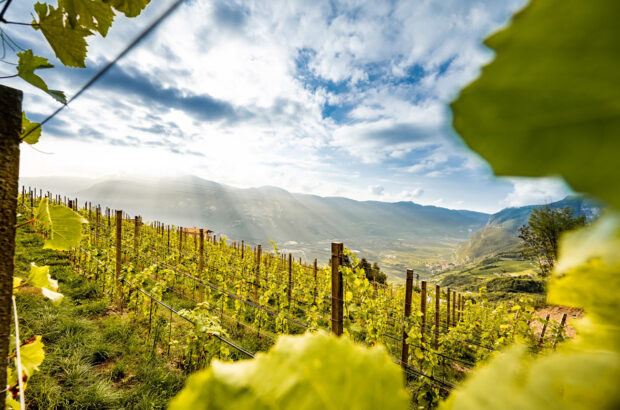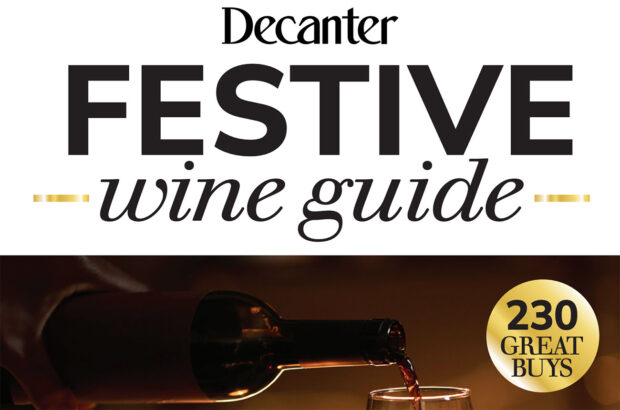Every glass of Cava starts with a ritual: the satisfactory stripping of the foil from the top of the bottle; unwinding the wire cage or alambre, its specific four and a half turns (or is it five? Count them…); gently twisting the bottle against the cork, while holding the cork firmly and safely. And then, with that appetising pfffft, comes the celebratory moment. In a rush of energy, the Cava escapes from the bottle in which it has been waiting for anything from nine months to nine years or more.
The choice is yours: a young, fruity Cava; or a wine that has spent longer in the bottle to develop greater complexity. Choose between a single variety or a blend, or indeed the expression of a single vineyard. And from different terroirs and zones: 95% of Cava comes from within Penedès, but within that there are diverse terroirs.
The first traditional method wines in Spain date back to 1872, or earlier. The first Regulatory Council of Sparkling Wines was established exactly a century later. Plenty has happened since then, in terms of viticulture, climate change, winemaking and consumer tastes. Fifty years later, in 2022, what subsequently became Denominación de Origen Protegida Cava will introduce a range of changes which illustrate the diversity of the wines.
One of the key aspects is sustainability. Spain is the leader in Europe in certified organic vineyards, and from 2025 all production from Cavas de Guarda Superior (the Reserva category upwards) will be 100% organic. A number of wineries are already certified, and these include Alta Alella and Parés Baltà who are both conducting detailed research on vineyard management.
The first Demeter-certified biodynamic winery in Spain was in Cava – Pinord, which was joined by Vins el Cep. Sustainability does not stop at the vineyard. While Cava needs a heavier, pressure-resistant bottle, wineries including Parés Baltà, Sumarroca, Codorníu and many others are working to reduce the weight. All of this, as well as reducing greenhouse gases in production and transport, is aimed at decreasing the environmental impact.
Putting Cava on the map
While there’s one collective word, ‘Cava’, up until now it has been an umbrella term that covers a wide geography across Spain. The new regulations, and in particular the potential to name the subzones in the Guarda Superior category, at last makes it possible to explore and understand the diversity of styles.
Comats de Barcelona
The newly named heart of Cava, effectively Penedès, has five very clear subzones. While the climate is predominantly Mediterranean, there are distinct differences.
- Valls d’Anoia-Foix is the traditional heart of Cava and has some 2,000 years of grape-growing history. It is centred on the towns of Sant Sadurni d’Anoia and Vilafranca del Penedès. The vineyards rise from 100m up to 750m and are protected from the north winds by the jagged beauty of Montserrat. X M P
- Serra de Mar lies just north of Barcelona, with low-lying vineyards strongly influenced by the sea. Xarel·lo , known here as Pansa Blanca, grown on sandy soils, makes wines for long ageing. X Ch GT
- Conca del Gaià. The Romans established vineyards here, close to their important shipping port of Tarragona. The vineyards follow the river Gaià inland, rising to 400m. X M P
- Serra de Prades. These vineyards lie at 350-600m on the slopes of the Serra de Prades, beyond the Conca del Gaià. There is a distinct diurnal temperature contrast with the continental climate influences. The red variety Trepat flourishes here. T M P
- Pla de Ponent. The most inland subzone of Comtats de Barcelona, at 200-400m, with continental influences, and poor soils. The rainfall is lower, the winters are colder, and there’s a marked diurnal temperature contrast. Ch PN X

Valle del Ebro
The Ebro is the only one of Spain’s great rivers to decant into the Mediterranean (the remainder flow west to the Atlantic). There are two Cava zones here:
- Alto Ebro is a cluster of subzones threading through Rioja. The Ebro threads between the two protective Sierras, with the vineyards at 600m. SP GT M
- Valle del Cierzo. The Cierzo is the cold wind that blows down from the Pyrenees towards Aragón. The Cierzo vineyards at 200m close to Zaragoza have a continental climate, with cold winters, hot summers, and a strong diurnal temperature contrast. M GT
Viñedos de Almendralejo
Cava’s most western and southerly production zone. It lies at 200-450m just south of Mérida, the town with an exceptional Roman theatre. A different style of Cava is produced by a continental climate, dry, with mild winters, and hot summers enhanced by hot winds. P GT
Zona de Levante
Requena’s vineyards, an hour’s drive inland from Valencia are at 600-900m on the meseta. The Mediterranean isn’t far, but the winters are long and cold, and there’s a notable diurnal temperature contrast. G M P
Decoding the grape varieties
Of the white varieties M Macabeo (Rioja’s Viura), X Xarel·lo , and P Parellada predominate. The productive Macabeo is the most widely planted. Xarel·lo contributes the backbone to many Cavas and has also become increasingly fashionable as a still wine. Parellada is the third most cultivated variety in Cava and provides the fruit. SP Subirat Parent is a member of the Malvasía family and is the same as Rioja’s Malvasía Riojana. It’s commonly used for sweeter Cavas.
The red varieties are T Trepat, berry fruited and spicy, a distinctive variety in Cava rosados. GT Garnacha Tinta, Spain’s second most planted red, and with notes of red berries and oranges. Monastrell is also found in Cava rosado.
In terms of international varieties, Ch Chardonnay was authorised in 1986. PN Pinot Noir was authorised in 1998 (and in Blanc de Noir since 2007).
Evans recommends top Cavas to try
The wines in this tasting illustrate the different Cava categories and styles discussed in this article. The wines in the tasting were selected from participating wines received by the DO Cava and tasted not blind.

Cava
Roger Goulart, Coral Rosé Brut, Cava 2018 90
£11.72-£15.20 Tannico; Winebuyers
Rioja is authorised to make Cava, however Rioja-based CVNE preferred to go back to the roots by purchasing Catalan Cava specialist Roger Goulart. It looks like a wise decision from my tasting across the range. While the pink packaging of this Coral Rosé might deter some drinkers, it was certainly a standout in my tasting of rosados. A blend of 70% Garnacha with 30% Pinot Noir, a refreshing mouthful of peach and berry fruit, one of the rare rosados that tasted like a pink wine. Drink 2021-2023 Alcohol 12%
Cava Reserva
Bodegas Langa, Reyes de Aragón Reserva Brut Nature, Cava Reserva 2017 91
£16.50 Vinissimus
A wine that celebrates the history the proud former kingdom of Aragón. Grown at around 700-800m on stony-clay soils, it’s a youthful, lively Cava with good freshness. Chardonnay (60%) – Macabeo (40% blend), 3 months barrel aged, and with 20 months ageing. Drink 2021-2023 Alc 11.5%
Dominio de la Vega, Reserva Especial, Cava Reserva 2016 91
£18.95 Jeroboams
From pioneering producers of Cava in Requeña. A Macabeo (70%)-Chardonnay (30%) blend, grown at 750, on clay-limestone. Part of the base wine is aged in French oak barriques. The wine is a glorious gold colour, and has developed over time a complex maturity. Drink 2021-2023 Alc 12.5%
Maria Rigol Ordi, Mil.leni Reserva Brut Nature, Cava Reserva 2016 91
£28.95 Tannico
A traditional blend of Xarel·lo, Macabaeo and Parellada with 15% of Chardonnay, this is a deliciously elegant Cava. With aromas of white flowers and citrus, it’s a youthful style with notes of pear and melon. The finish is pure and clean with good underlying acidity and a persistent lively mousse. Organic. Drink 2021-2023 Alc 11.5%
Cava Gran Reserva
Sumarroca, Núria Claverol Homenatge Gran Reserva, Cava Gran Reserva 2014 93
£33.49 finewinecompany.co.uk
Núria, with its distinctive black, club-shaped bottle is a very likeable homage to their mother. Núria is bursting with energy, with arimas of patisserie and toasted almonds. In the mouth there are apricots alongside the toast and vanilla. Youthful despite its years, lighter style, more delicate, made for a summer day. Drink 2021-2024 Alc 12.5%

Oriol Rossell, Ariadna Gran Reserva Brut Nature, Cava Gran Reserva 2015 94
€20 oriolrossell.com
A blend of Xarel·lo planted in 1968 with Pinot Noir planted in 2005. Aged in vat for 4 months on its lees and then a minimum of 36 months in bottle. The result is a wine with a golden appearance, and a deceptively vivid spirit. The toasty, roasted aromas follow through on the palate, finishing with a resounding peach and yellow plum note on the finish. expertly handled. Organic. Drink 2021-2025 Alc 12%
Parés Baltà, Blanca Cusiné Gran Reserva Brut Nature, Cava Gran Reserva 2012 94
£31.49-32.99 Oxford Wine Co; 9 Elms; Blanco & Gomez
Nearly 12 years old and still going strong! The wines from the family at Parés Baltà go from strength to strength as they continue to explore organic and biodynamic farming. The Cava is a blend of Xarel·lo (81%) with Chardonnay and Pinot Noir. Smoky, forest floor aromatics lead into a wine of toasty maturity set alight by bright acidity and a lively spritz. Very long persistent finish. Organic. Drink 2021-2025 Alc 12%
Vins Familia Ferrer, Anyades Historiques Gran Reserva Brut Nature, Cava Gran Reserva 2004 97
This isn’t the also very distinguished Cava de Paraje from the Can Sala estate; instead this is a special bottling ‘Historic Vintage’ of the 2004 vintage disgorged on 6th April this year. Aromatically it’s delicately toasty, and the first impression is exceptionally fresh. Underneath there’s an echo of the toast amid the flaky patisserie and toasted almonds. It’s savoury, with the mineral notes of mature Cava. A gastronomic wine with years ahead, Glorious! Drink 2021-2028 Alc 12%
Cava de Paraje Calificado
Alta Alella, Mirgin Exeo Paratge Qualificat Vallcirera, Cava de Paraje Calificado 2015 93
(2013) £265-£426 x 6 Christopher Keiller; Blanco & Gomez
There’s more to Alta Alella than its distinctive bottle shapes. The 60% Pansa Blanca (Xarel·lo)-40% Chardonnay blend comes from an estate just 2km from the Mediterranean.The soil is sauló – an acidic, granitic sand that gives the wine a unique character. It’s fermented in 2-3 year old barrels and aged for a minimum of 36-48 months. Honeyed, floral, apple aromas, and a vivacious palate with a mineral sign off. Organic. One of just 6 wineries to produce Cava de Paraje Calificado. Drink 2021-2026 Alc 12%
Juvé y Camps, La Capella, Cava de Paraje Calificado 2010 95
£78.05 Winebuyers.com
This Cava de Paraje – with its diamond shaped sticker signifying the fact – is 100% Xarel·lo, grown on clay-limestone in sight of the majestic Montserrat. It is maturing beautifully with notes of roasted apricots and honeycomb, seriously long and elegant. The zest of the mousse contrasts well with the finishing mineral note. Limpid and finely balanced. Drink 2021-2025 Alc 12%
On the label
New: ‘Elaborador integral’ (’Integral Producer’) stamp for bodegas that manage the process from grape reception to vinification (i.e. no purchasing of made wines).
Cava de Guarda New: Naming the origin (optional). Minimum nine months ageing in bottle.
Cava de Guarda Superior New: Naming the subzone of the origin (optional). Minimum vineyard age of 10 years. 100% organic vineyard. Production limited to 10,000kg/ha starting with the 2022 harvest. Proof of the vintage on the label. Traceability from grape harvest to bottling.
Reserva Minimum 18 months ageing in bottle.
Gran Reserva Minimum 30 months ageing in bottle.
Cava de Paraje Calificado Minimum 36 months ageing in bottle. This is the single vineyard category introduced in 2015, with the highest restrictive quality controls.







